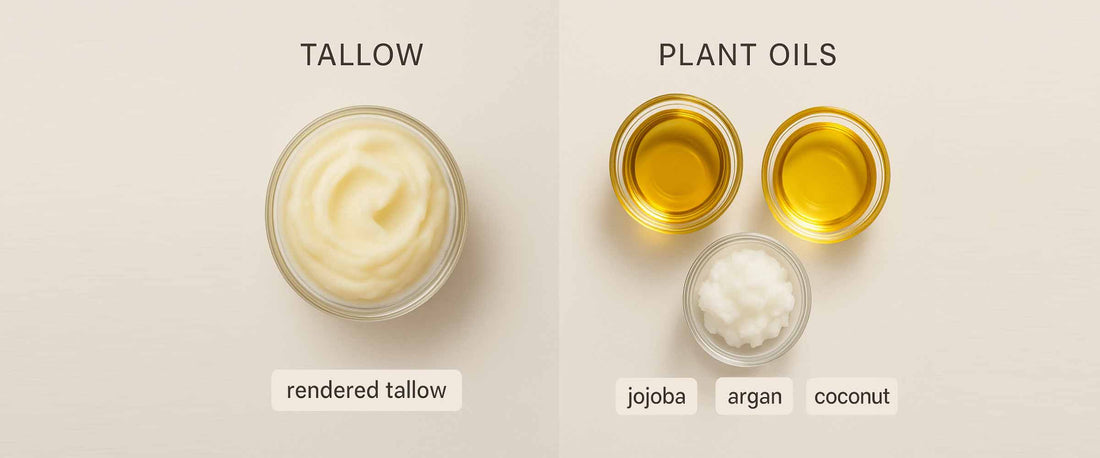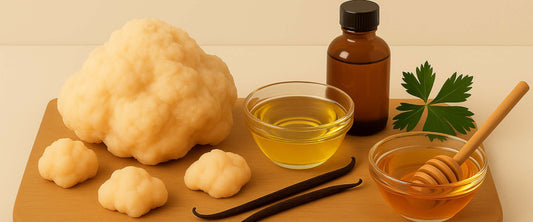
9. Suet vs Plant Oils: What Your Skin Really Wants
If you’ve been using natural oils like jojoba, argan, or coconut, you’re already ahead of the game. But suet-based tallow plays in a different league.
Not because it’s “better” for everyone—but because it offers something most plant oils can’t.
Plant oils are often rich in nutrients and antioxidants. They can be light, moisturizing, and useful for specific skin needs. But most are high in polyunsaturated fats, which can oxidize quickly and aren’t as structurally similar to human sebum. They sit on the skin longer, can feel greasy, and don’t always absorb deeply. Some can even irritate sensitive skin, especially in people prone to acne or eczema.
Suet-based tallow, on the other hand, is made up of saturated and monounsaturated fats, which are more stable and more bioavailable—meaning your skin recognizes them and absorbs them more efficiently. Stearic acid, palmitic acid, and oleic acid in tallow directly support the lipid barrier, helping skin retain moisture and stay resilient. The effect is deeper, longer-lasting hydration without the shine.
Then there’s the vitamin load. Tallow naturally contains skin-essential vitamins like A (retinol), D, E, and K2—fat-soluble nutrients that plant oils either lack entirely or provide in less usable forms. These vitamins nourish at a cellular level, promoting renewal, elasticity, and healing.

It’s also worth noting that tallow rarely needs preservatives or chemical stabilizers. It’s shelf-stable on its own thanks to its saturated fat content, whereas many plant oils require added ingredients to stay fresh or usable.
None of this is to say plant oils are “bad”—we even use some, like olive and jojoba, in our balm. But tallow offers a kind of ancestral compatibility with the skin that plants can’t fully replicate. It’s not about one or the other. It’s about balance, synergy, and what your skin responds to best.
Read next: FAQ About Suet





